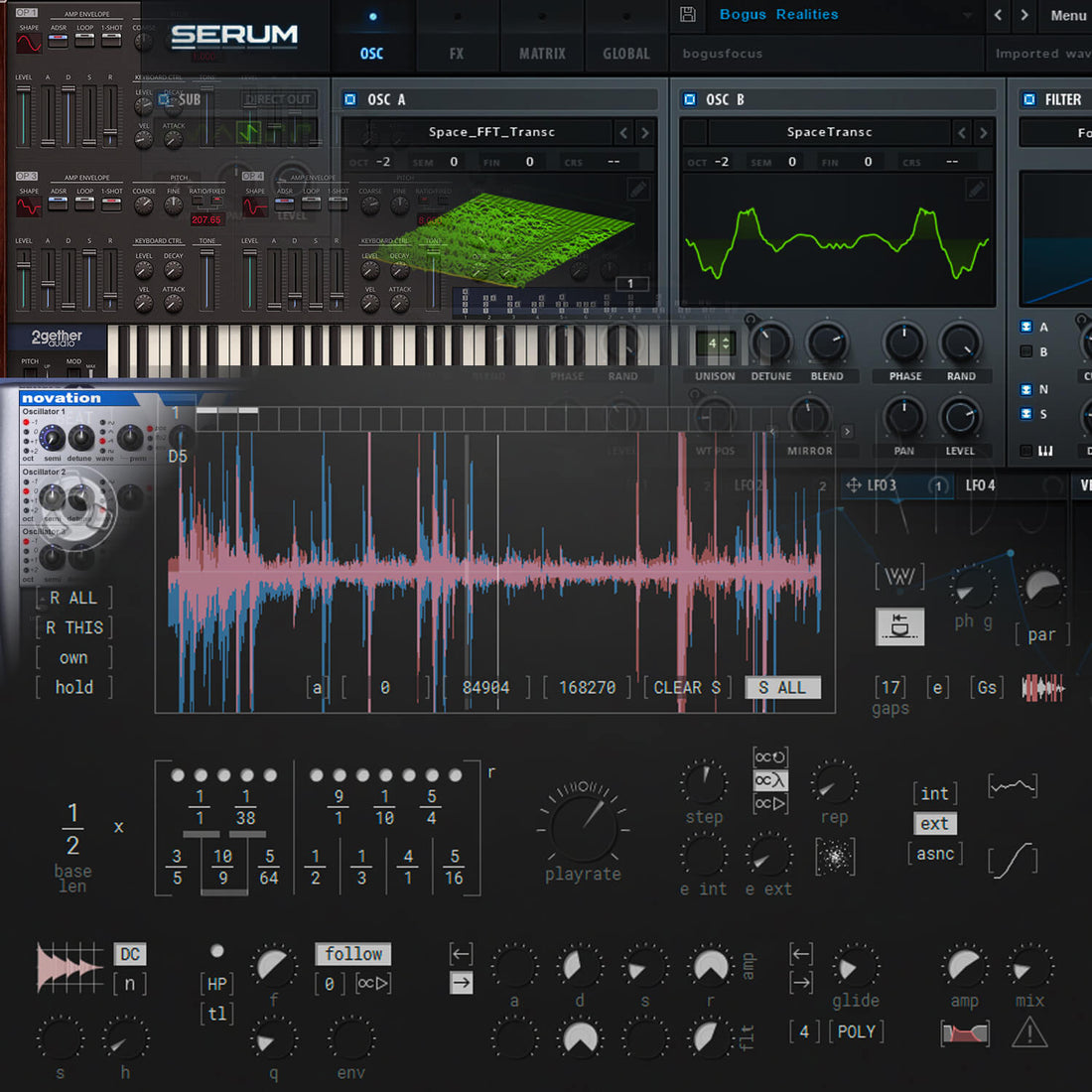Music production and synthesis have come a long way since the advent of electronic music. The first synthesizer was invented by Robert Moog in the 1960s, and since then, countless different synthesis techniques have been developed. Each technique has its own unique characteristics, allowing producers and sound designers to create a diverse range of sounds and textures.
In this article, we will explore some of the most popular synthesis techniques, including subtractive synthesis, additive synthesis, frequency modulation synthesis (FM synthesis), and wavetable synthesis. We will discuss the fundamental principles of each type of synthesis, the types of sounds they are best suited for, and some of the most popular software and hardware synthesizers that utilize each technique.
Subtractive Synthesis

Subtractive synthesis is one of the oldest and most popular synthesis techniques. It involves starting with a complex waveform, such as a sawtooth or square wave, and then filtering out specific frequencies to create a desired sound. This is typically done using a low-pass filter, which allows low frequencies to pass through while attenuating higher frequencies.
Subtractive synthesis is a versatile technique that can be used to create a wide range of sounds, from bright and punchy leads to warm and fuzzy basses. Because it is such a popular technique, many software and hardware synthesizers are based on subtractive synthesis. Some of the most popular subtractive synthesizers include the Roland TB-303, the Minimoog, and the Native Instruments Massive.
Additive Synthesis

Additive synthesis is the opposite of subtractive synthesis. Instead of starting with a complex waveform and filtering out frequencies, additive synthesis involves starting with simple waveforms, such as sine waves, and adding them together to create a complex waveform. This is typically done using a process called Fourier synthesis, which allows any waveform to be constructed from a series of sine waves at different frequencies and amplitudes.
Additive synthesis can be used to create incredibly complex and evolving sounds, but it can also be quite time-consuming to program. For this reason, it is less popular than subtractive synthesis, and there are fewer software and hardware synthesizers that utilize this technique. Some notable additive synthesizers include the Kawai K5000, the Yamaha DX7II, and the Waldorf Kyra.
Frequency Modulation Synthesis (FM Synthesis)

Frequency modulation synthesis (FM synthesis) is a digital synthesis technique that was popularized by Yamaha in the 1980s with their DX series of synthesizers. FM synthesis involves using one waveform, known as the carrier, to modulate the frequency of another waveform, known as the modulator. This creates a complex and often unpredictable sound that can range from metallic and percussive to smooth and bell-like.
FM synthesis can be difficult to program, as changing the frequency of the modulator can have a significant impact on the resulting sound. However, once mastered, it can be used to create some incredibly unique and interesting sounds. Some notable FM synthesizers include the Yamaha DX7, the Korg Volca FM, and the Native Instruments FM8.
Wavetable Synthesis

Wavetable synthesis is a relatively new synthesis technique that was popularized by the PPG Wave synthesizer in the early 1980s. Wavetable synthesis involves using a series of pre-recorded waveforms, known as wavetables, to create a complex and evolving sound. The position within the wavetable can be modulated to create different timbres and textures.
Wavetable synthesis is often used to create evolving pads and textures, but it can also be used to create more traditional sounds such as leads and basses. Some notable wavetable synthesizers include the Waldorf Blofeld, the Serum synth, and the Ableton Wavetable instrument.
Granular Synthesis

Granular synthesis is a relatively new synthesis technique that involves breaking down a sound into tiny individual grains and then manipulating them in various ways. Each grain typically only lasts a few milliseconds, and they can be manipulated in terms of their pitch, amplitude, and duration to create unique and evolving textures.
Granular synthesis is often used to create ambient and atmospheric sounds, as well as glitchy and experimental textures. It can be challenging to program, but there are several software synthesizers that make it more accessible, such as the Granulator II in Ableton Live.
Physical Modeling Synthesis

Physical modeling synthesis is a technique that attempts to recreate the physical properties of an instrument, such as its resonance and vibration, using mathematical models. This can result in incredibly realistic and expressive sounds that are difficult to achieve with other synthesis techniques.
Physical modeling synthesis is often used to recreate acoustic instruments, such as pianos, guitars, and drums, but it can also be used to create more abstract and experimental sounds. Some notable physical modeling synthesizers include the Applied Acoustics Systems Tassman, the Native Instruments FM8, and the Pianoteq virtual piano.
Sampling Synthesis

Sampling is a synthesis technique that involves recording real-world sounds and then manipulating them to create new sounds. This can involve slicing and rearranging samples, stretching and pitch-shifting them, or applying various effects to them.
Sampling is an incredibly versatile synthesis technique that can be used to create a wide range of sounds, from realistic instruments to abstract and experimental textures. Some notable samplers and software samplers include the Akai MPC series, the Native Instruments Kontakt, and the Ableton Simpler instrument.
Conclusion
In conclusion, there are many different synthesis techniques available to producers and sound designers, each with its own unique characteristics and strengths. Subtractive synthesis is perhaps the most popular and versatile technique, but there are also several other techniques, such as additive synthesis, FM synthesis, wavetable synthesis, granular synthesis, physical modeling synthesis, and sampling, that can be used to create unique and interesting sounds.Whether you are looking to create realistic acoustic instruments, abstract soundscapes, or anything in between, there is a synthesis technique out there that can help you achieve your goals. By experimenting with different techniques and tools, you can discover new and exciting sounds and push the boundaries of what is possible with electronic music production.

